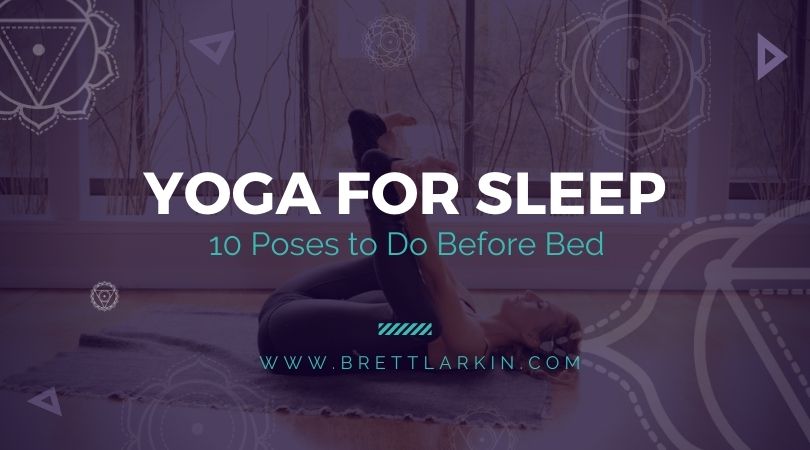
Getting to sleep at night is one of the biggest challenges for millions of people every year.
In fact, the CDC reports that a third of Americans have problems getting enough sleep each night.
One third!
That’s over 109 million people who are sleep-deprived.
The good news?
Yoga can help.
Yoga is a combination of various postures, breathing techniques, and meditation. Yoga benefits the central nervous system and strengthens immunity, relieves muscle tension, and gives people a sense of focus.
Many studies have linked yoga’s benefits to improved sleep, decreased sleep disturbance during night time, and decreased use of medications for sleep.
And anyone can practice yoga.
Ready to give it a try?
The article summarizes the benefits of yoga for sleep, as well as the top bedtime yoga poses for improved sleep and for alleviating sleep disorders. Paired with calming breath practice, these yoga poses will get you into a blissful sleep in no time.
Benefits of Yoga for Deep Relaxation and Sleep / Insomnia
- Yoga promotes peace of mind and builds a sense of well-being, feelings of calmness, and a positive outlook on life. Yoga practices inhibit the areas responsible for anxiety, anger, and rage and activate the median forebrain and other areas of rewarding pleasure centers that contribute to a state of bliss and pleasure.
- Regular yoga practice increases blood flow and releases endorphins that help you get restful sleep. Yoga has been studied to determine its potential effects on sleep and insomnia, because of its ability to increase relaxation and induce a healthy mental state.
- A systematic review was carried out to examine the effectiveness and safety of yoga sequences on improving women’s sleep quality and severity of insomnia. The review included nineteen studies with a total of 1832 participants. This meta-analysis demonstrated that yoga intervention in women can be beneficial when compared to non-active control conditions in terms of managing sleep problems.
- Similarly, a study reported by Soni et al., concluded that Yogic breathing sequence can improve the strength of the respiratory muscles which resulted in better tissue perfusion and improved oxygen saturation. Considering the fact that sleep apnea is associated with decreased oxygen saturation, improved oxygen saturation due to Yoga exercises might be another possible explanation for fewer sleep disturbances in the Yoga group.
Best Types of Yoga for Sleep
Yoga helps one to relax, slows the breath, and helps us focus on the present, shifting the balance from the sympathetic nervous system and the flight-or-fight response to the parasympathetic system and the relaxation response.
The latter is calming and restorative; it lowers breathing and heart rate, decreases blood pressure, lowers cortisol levels, and increases blood flow to the intestines and vital organs. Yoga improves sleep disturbance by increasing melatonin levels.
Another possible reason explained for better sleep quality in Yoga practitioners is that Yoga exercises involve stretching and relaxing of muscles that cause significant physical and mental exertion, resulting in less sleep latency, more deep sleep, fewer sleep disturbances, and better sleep efficiency.
The four best types of yoga for sleep include
1. Iyengar Yoga
The practice of Iyengar Yoga integrates pranayama and yoga posture (asana) and is perfect for strength and flexibility building. Most practitioners have testified the depth of peacefulness experienced, which could be extremely beneficial for a better night’s sleep. The asanas followed in are very beneficial for insomnia as well.
2. Hatha Yoga
By using a variety of body postures, movements (asanas), and breathing techniques, Hatha yoga improves the physical body’s capacity. Hatha yoga’s breathing strategies concentrate on deliberate prolongation of inhalation, retention of breath, and exhalation. It offers a deep sense of calm as it lowers cortisol levels and stimulates the parasympathetic nervous system, which helps us feel relaxed, which in turn can help you get a good night’s sleep.
3. Yin Yoga
Yin Yoga is a slow-paced exercise type of yoga that integrates traditional Chinese medicine concepts, with asanas performed for longer periods of time than in other forms. Most of the yin sequences can be practiced at night, or any time of the day and calm the nervous system. It can also aid in the ability to fall asleep with ease.
4. Yoga Nidra
Yoga nidra has been called the ‘bedtime yoga’ because of the way that it gently lulls you into a restful sleep. It works by walking you through a progressive relaxation so that you relax each part of your body, one spot at a time. You can record your own voice by reading a yoga nidra script, and then play it back to yourself as you’re settling into bed at night. Or you can listen to your favorite yoga teacher guide you into relaxation via YouTube or one of the many meditation apps.
Top Yoga Poses for Sleep
1. Cow Pose (Bitilasana)
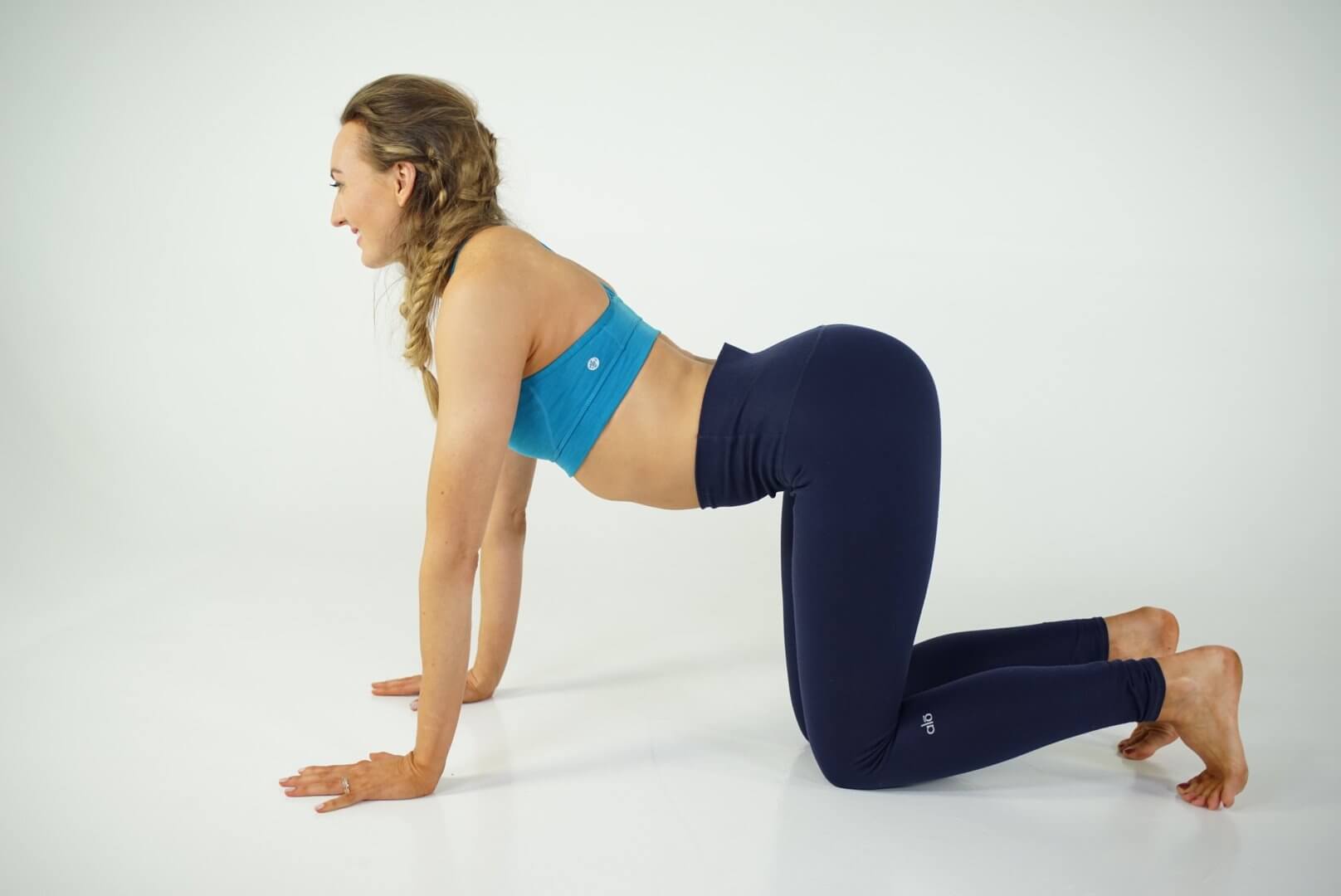
- Step 1: Place your knees and hands on the floor at a well-spaced distance.
- Step 2: Form a curve with your back, your head facing up towards the sky.
- Step 3: Exhale and arch your back, bring your head down, facing the ground.
- Step 4: Repeat this variation for a few seconds.
Variations: For those with wrist Pain – Instead of putting your Palms on the floor, bend your elbows and place your forearms. For Knee Pain – Place a towel under your knees. For Neck Pain – Align your Head with the Torso.
Benefits: This asana is great to relax the mind and body. A relaxed mind and happy muscles help you sleep better.
2. Happy Baby (Ananda Balasana)
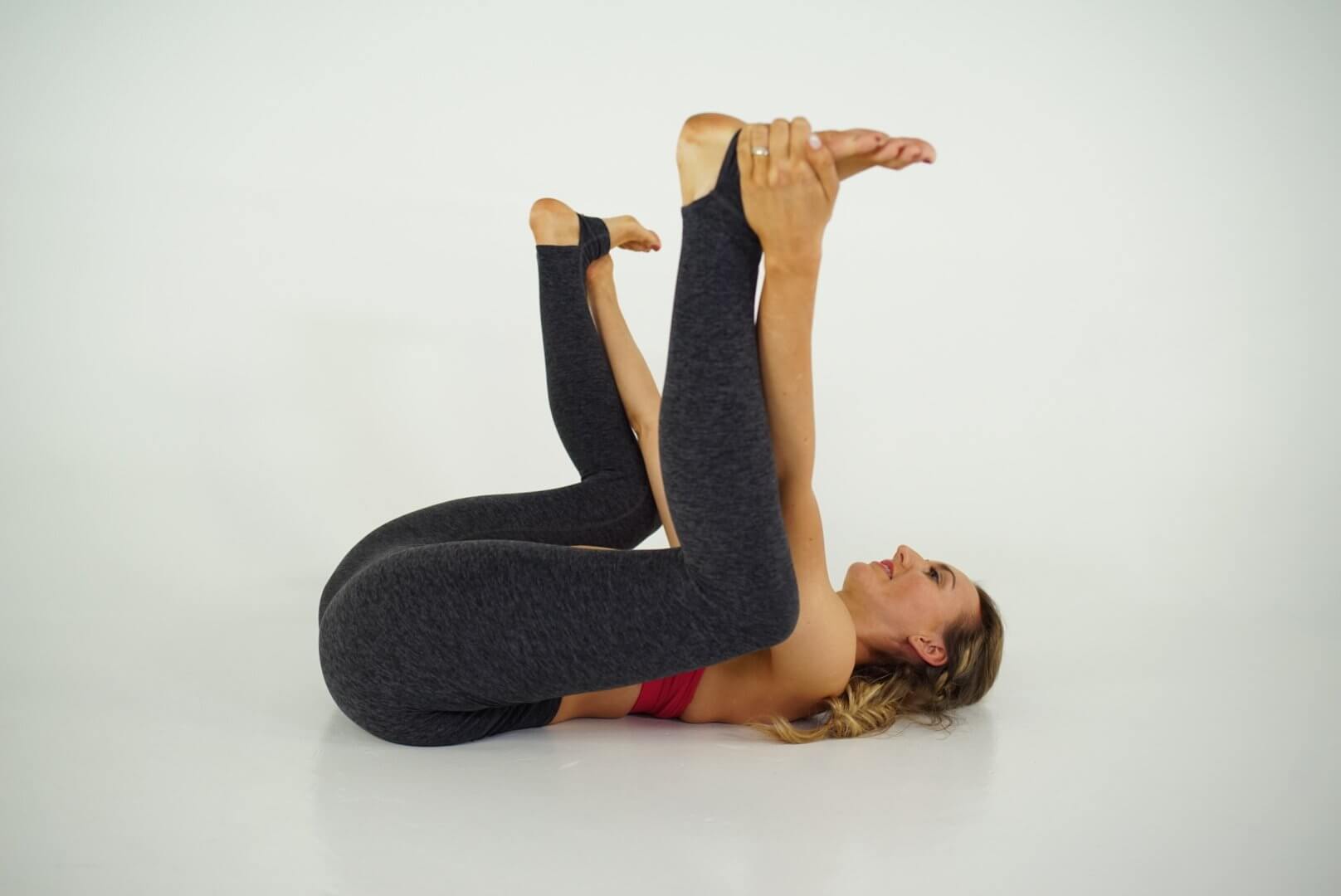
- Step 1: Bringing both knees back into your chest, grasp your two big toes with the index and middle finger.
- Step 2: Then pull the heels up to the ceiling, keeping the tailbone down on the ground.
- Step 3: Your knees should be pulling into your underarm area, and you can rock back and forth to gently massage the spine. This is a great pose for relieving abdominal discomfort and is a perfect final spinal relaxation pose.
Variations: To make the pose accessible and easier a yoga bolster can be placed on the belly and held with both the arms and the legs interlocked around the bolster.
Benefits: This yoga routine calms the mind, relieves stress, and anxiety. It is considered as one of the restorative poses which can be done for better sleep and full-body relaxation.
3. Legs Up the Wall (Viparita Karani)
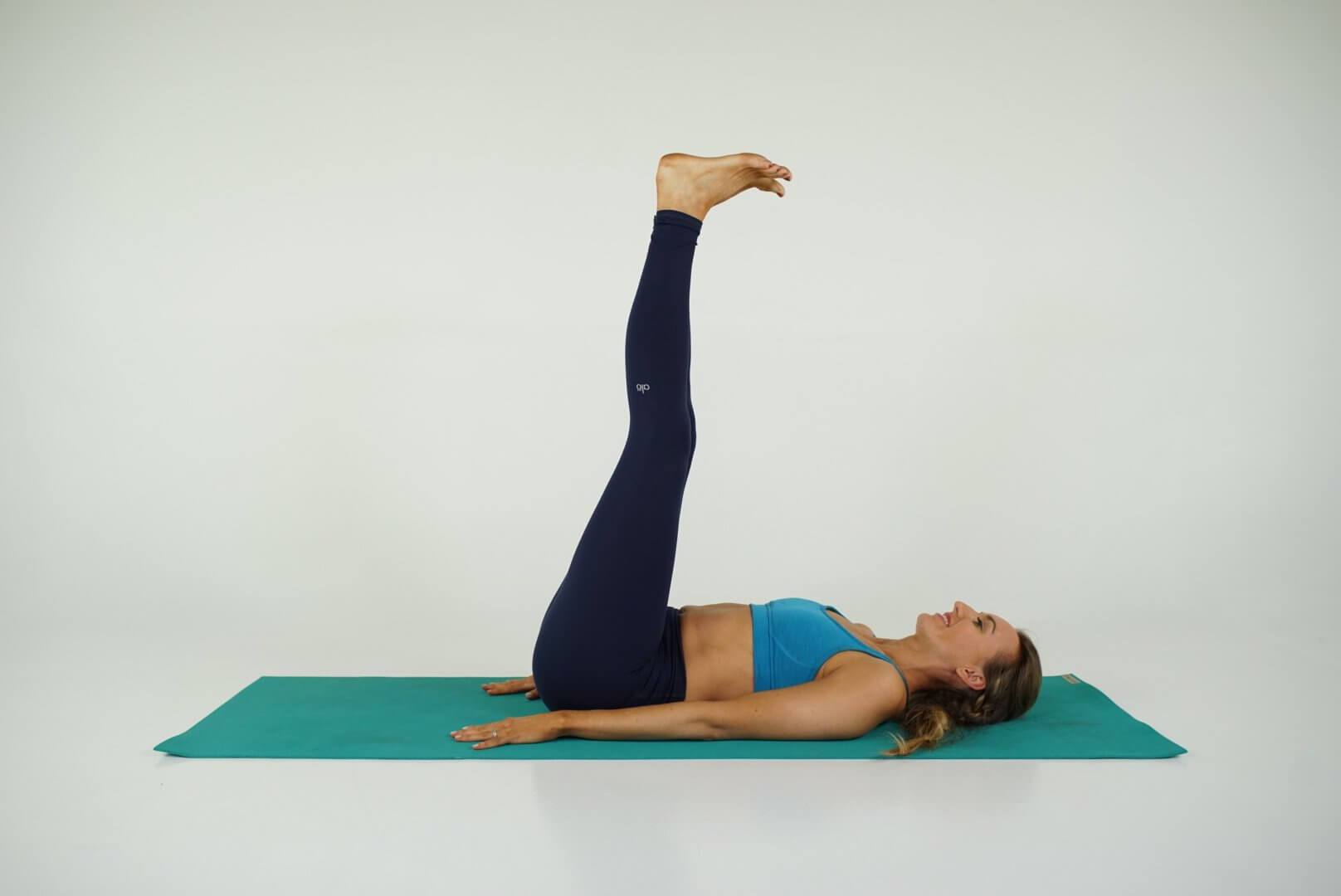
- Step 1: Find a tall, flat, upright wall. Sit with your feet firmly planted on the floor and your left side directly against the wall.
- Step 2: On an exhale, move so your back is on the floor and your feet are flat against the wall.
- Step 3: If you can, bring your tailbone closer to the base of the wall, perhaps even to the point where your glutes are touching the wall. Relax every part of your body while keeping your legs propped up against the wall.
- Step 4: Close your eyes and breathe deeply. Stay in the posture for up to 15 minutes.
- Step 6: To exit the posture, gently bend your knees and push your body away from the wall. Turn to your right side and lie in a fetal position before pressing yourself up to a seated position.
Variations: You can spread your legs in a wide ‘V’ when they are against the wall if you have enough space. This will increase the stretch in the groin and the thighs. Alternatively, bend the knees and touch the soles together to maximize the stretch. Slide down the outer edges of your feet, then bring your heels closer to the pelvis. To increase the stretch in the groin, press your hands against the top of the inner thighs.
Benefits: You will allow the nervous system to calm down with the legs above the head, and improve blood flow and circulation. This asana being a restorative pose helps the blood to circulate to any part of the body. It helps, therefore, to relieve just about any ailment.
4. Corpse Pose (Savasana)
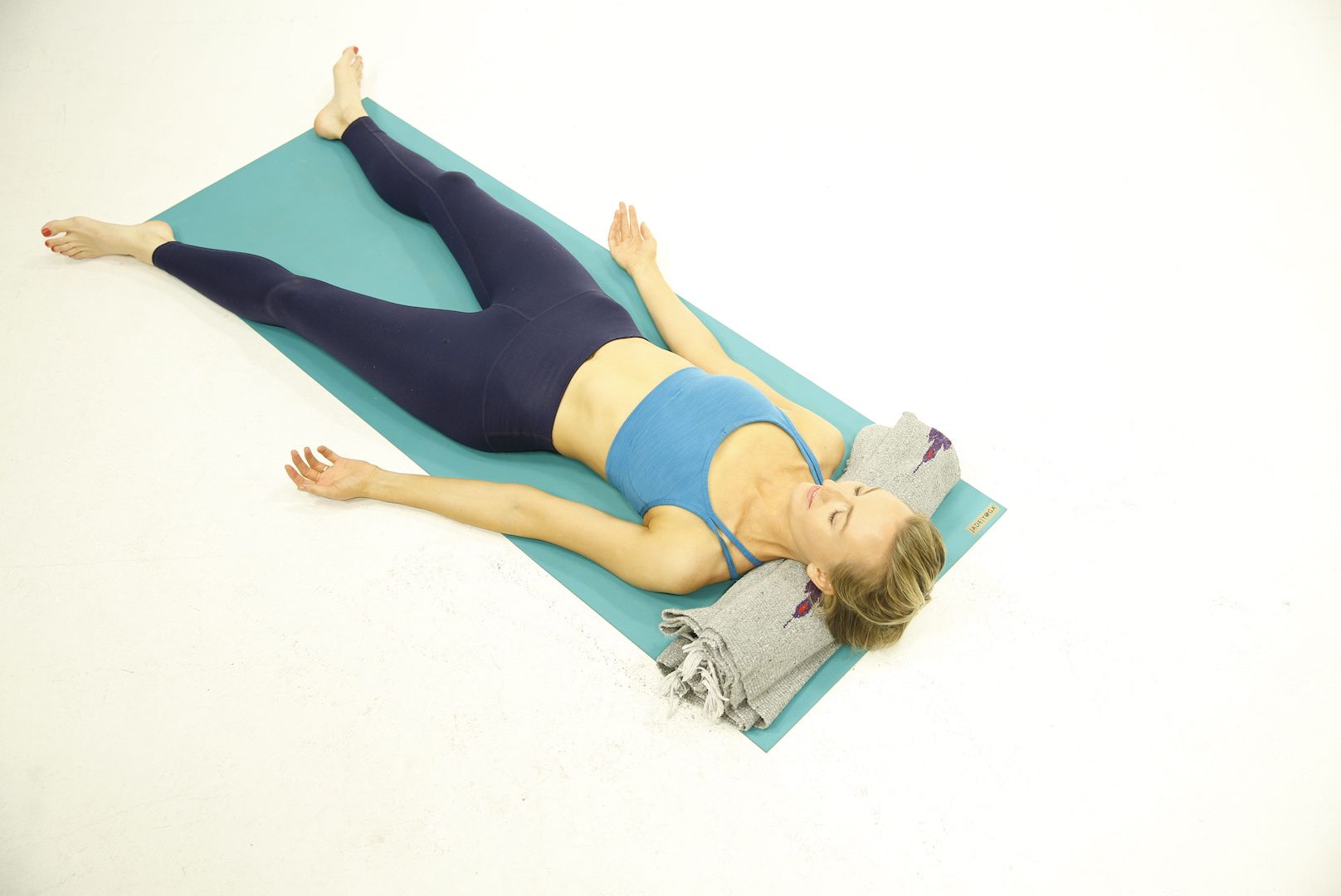
- Step 1: Lie on your back, preferably without any props or cushions. Close your eyes.
- Step 2: Release your hands so that palms are facing up and the backs of the hands are resting on the mat/bed a few inches away from the hips.
- Step 3: Simply let your eyes close and let your mind be still and free of thoughts while letting your breath come naturally and letting your body feel heavy, relaxed, and tranquil.
- Step 4: After about 10-20 minutes when you feel fully relaxed, keeping your eyes closed, slowly roll onto your right side. Lie in that position for a minute or so. Then, taking the support of your right hand, gently sit up into a seated pose.
- Step 5: Keep your eyes closed and take a few deep breaths in and out as you gradually become aware of your environment and the body. When you feel complete, slowly, and gently open your eyes.
Variations: Prone savasana is a savasana version that is especially good for those with lower back pain, those with hip and tailbone back sensitivity. Lie on your belly with your hands stacked and elbows bent out to the side, forehead resting on your hands, to perform this variant of savasana. Make sure you are able to breathe through your nose comfortably.
Benefits: Savasana is considered to be a wonderful way to relax the mind, alleviate tension and tiredness, lower blood pressure, relieve pain in the brain, and improve sleep.
5. Standing Half Forward Bend (Ardha Uttanasana) at the Wall
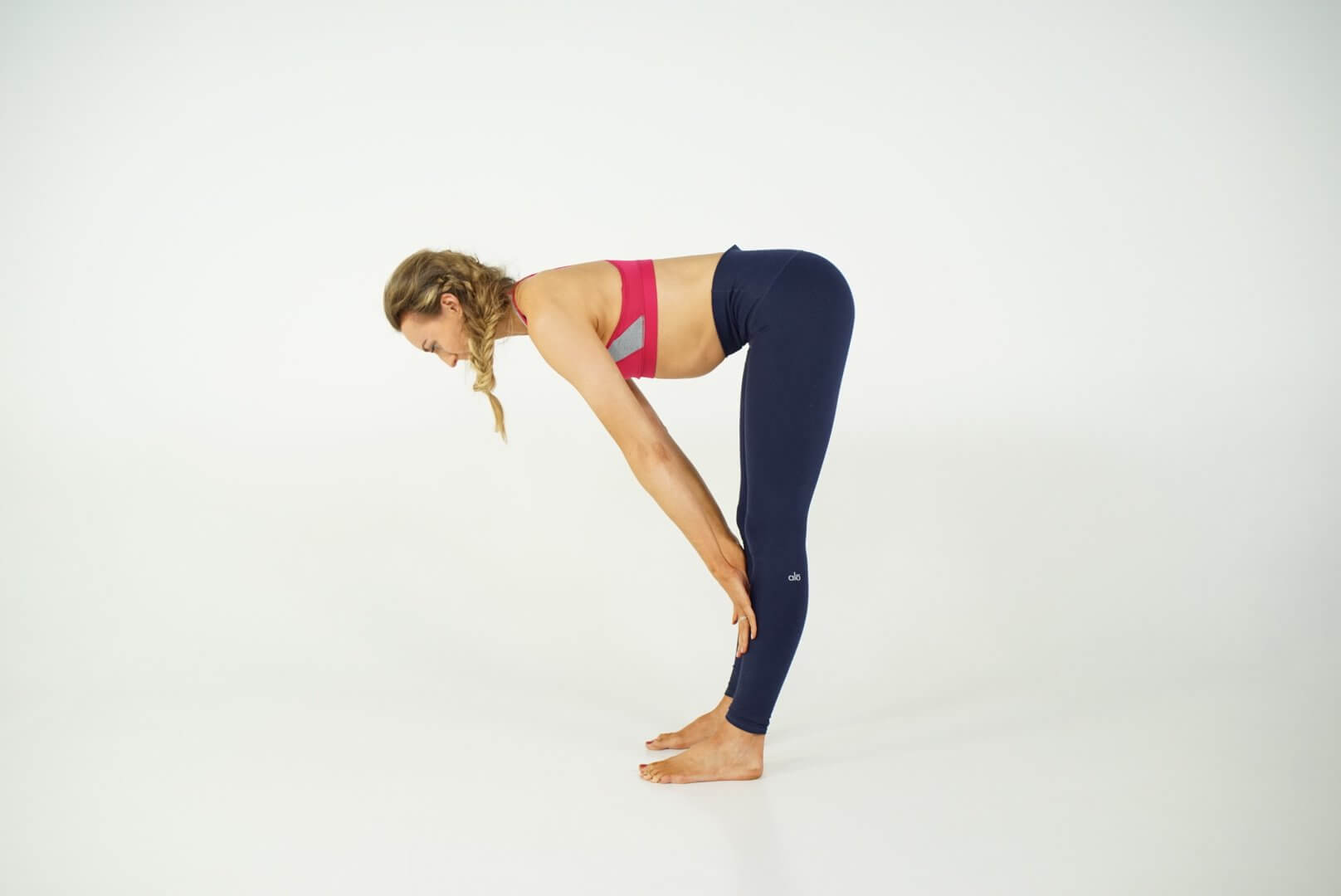
- Step 1: Begin in a standing forward bend (Uttanasana), with your feet separated hip-distance apart and your knees bent as much as you need in order to take any tension out of your low back. Take a few breaths here, allowing your upper body to be completely heavy.
- Step 2: With an inhale, lift your torso up halfway to find a flat back, and either place your fingertips on either side of your feet, or place your palms on your shins or upper thighs.
- Step 3: Straighten your arms and lift your torso away from your thighs, finding an even sense of length between your front and back body.
- Step 4: Reach your chest forward and draw your shoulder blades together and down onto your back.
- Step 5: Send your gaze slightly forward to lengthen the back of your neck. Take 3 deep breaths here.
- Step 6: To come out of the pose, exhale to release back into your forward fold.
Variations: Those with back injuries should practice this pose with their hands resting on the back of a chair or against a wall. Hold your knees bent slightly. Keep your head down if you have a neck injury, do not lift it to look ahead. Often work within the boundaries and expertise of your own range.
Benefits: This pose helps to teach the linking of breath with movement, an action that soothes and calms the mind.
6. Legs on a Chair Pose
- Step 1: Ensure the chair is stable and won’t move when you place your legs on it.
- Step 2: Lie in front of the chair and place your calves on the seat of the chair.
- Step 3: Let your hands rest by your side and rotate the palms and the insides of the elbows to the ceiling to open through the chest.
- Step 4: Draw the chin towards the chest to lengthen through the neck. If needed, use a cushion or towel to support your head.
Variations: If the seat is a little high, consider putting a folded blanket or block under your sacrum to lift your hips. Alternatively, step away from the chair, set your legs straight, and place your feet on the edge of the seat.
Benefits: This pose will assist with relaxation and muscle relaxation, ensuring good sleep. This posture helps to relieve tension and feelings of anxiety.
7. Reclining Bound Angle (Supta Baddha Konasana)
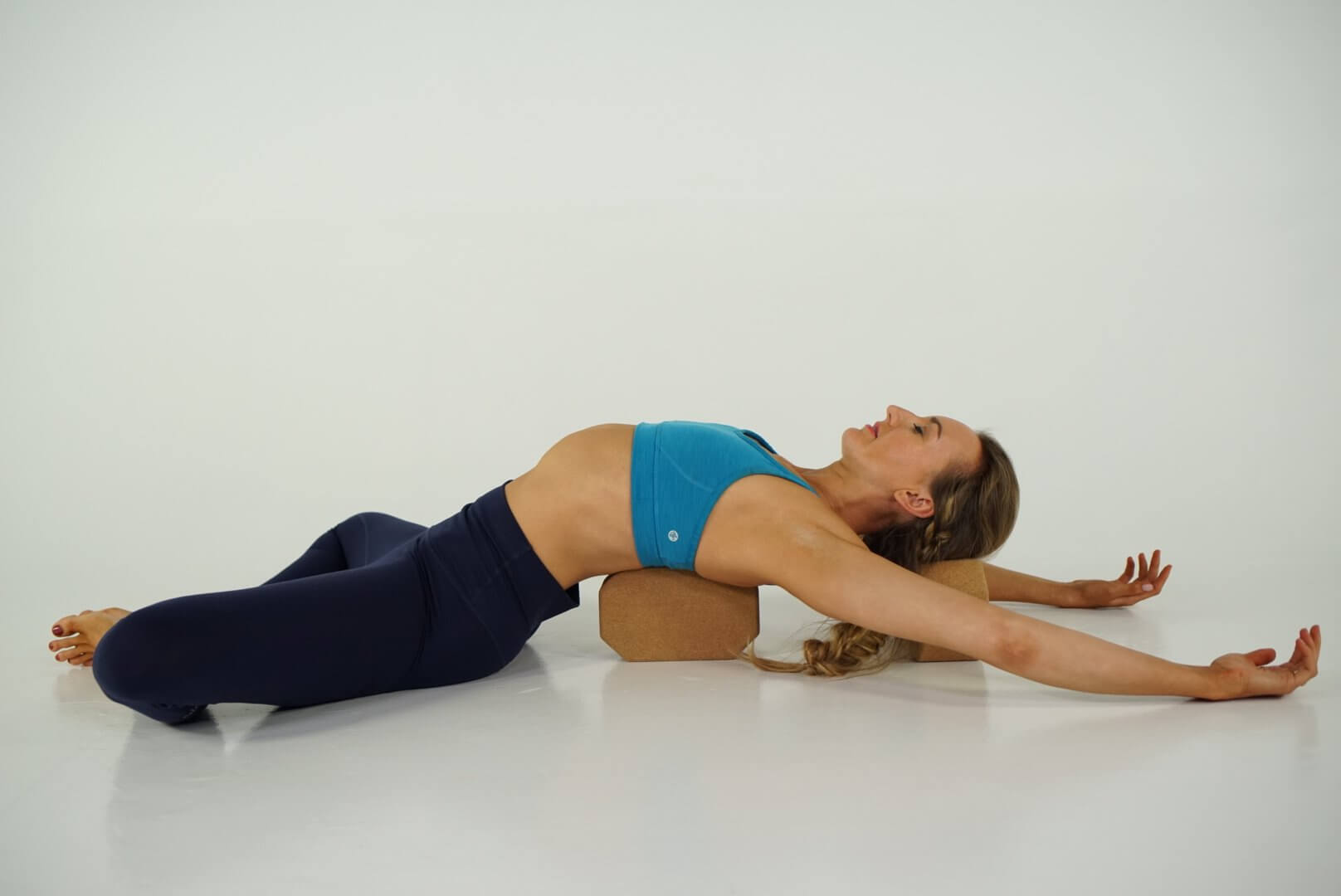
- Step 1: Lie down on the yoga mat.
- Step 2: Bend your knees, and place your feet on the floor, close to your tailbone.
- Step 3: Bring the soles of your feet together and allow your knees to relax away from each other while placing blocks or firm cushions underneath your knees on each side to support your hips.
- Step 4: Relax your arms on the floor about 45 degrees away from your torso, palms facing the ceiling.
- Step 5: To start, stay in this pose for one minute. Gradually extend your stay anywhere from five to 10 minutes. To come out, use your hands to press your thighs together, then roll over onto one side and push yourself away from the floor, head trailing the torso.
Variations: If you feel any strain in the inner thighs and groins, support each of your thighs on a block or folded blanket slightly above the full stretch of the groin. Make sure each support is the same height, whether a block or blanket.
Benefits: Supta Baddha Konasana, if practiced before bedtime, induces good sleep and relaxes the mind for those suffering from insomnia.
8. Child’s Pose (Balasana)
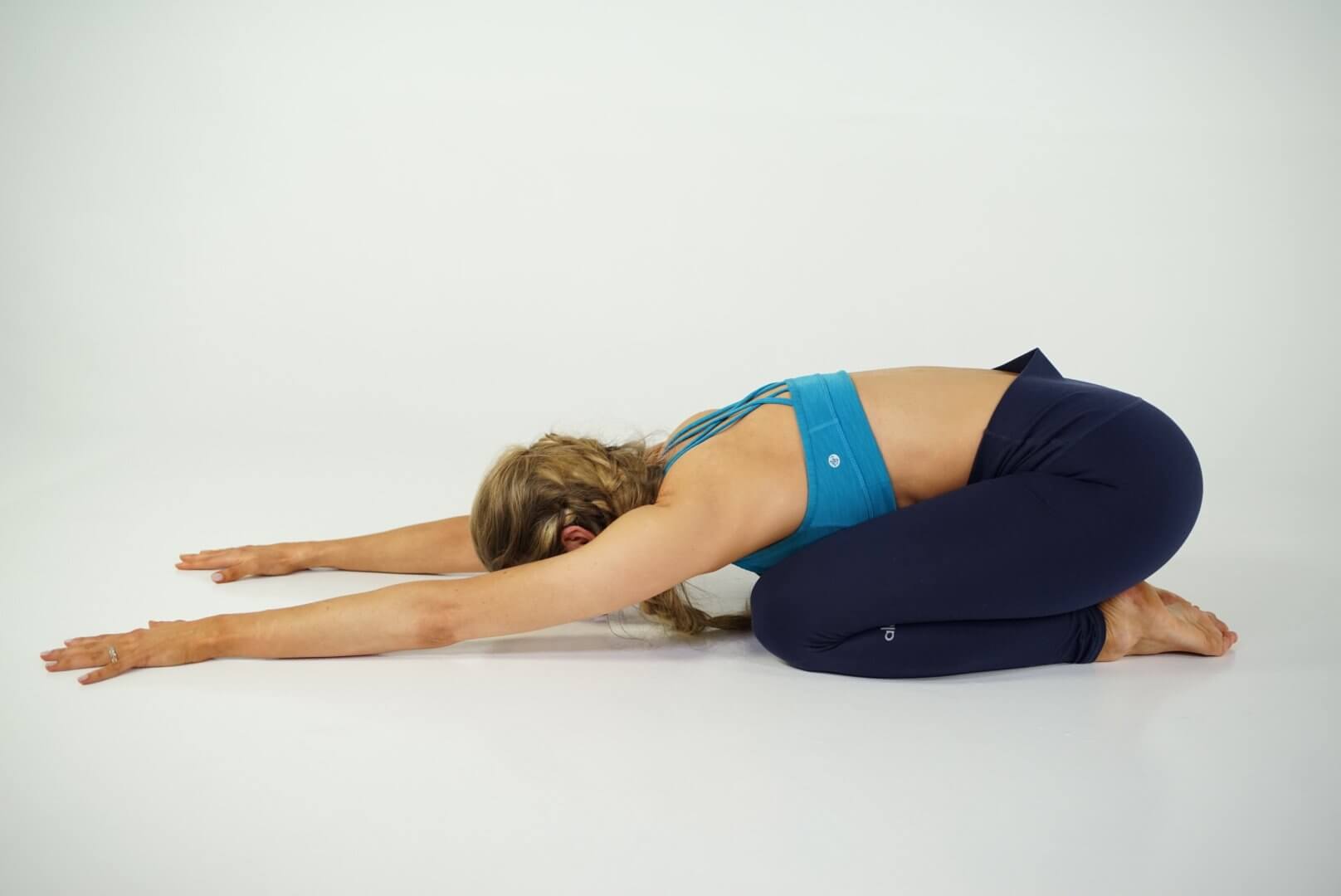
- Step 1: Begin on your hands and knees. Center your breath, and begin to let your thoughts slow down. Turn your awareness inward.
- Step 2: Sink your hips back to your heels and settle your chest between your thighs.
- Step 3: Your big toes should be touching one another and your knees should be as far apart as they need to be to help you settle comfortably and be able to breathe deeply.
- Step 4: With your forehead resting on the ground or a blanket, walk your fingertips out in front of you, stretching through the arms.
Variations: If you don’t feel comfortable doing balasana face down, then reverse this flexible asana by coming on your back. All you have to do is lie down and hug your knees against your stomach, with your hands resting on your shins or your thighs on your back. Then open your legs and bring your knees into your armpits.
Benefits: Balasana will assist with relaxing and calming the muscles, ensuring good sleep if practiced after a tiring workday or workout. This posture helps to relieve tension and feelings of anxiety.
9. Reverse Pigeon Against Wall Pose (Custom Sucirandhrasana)
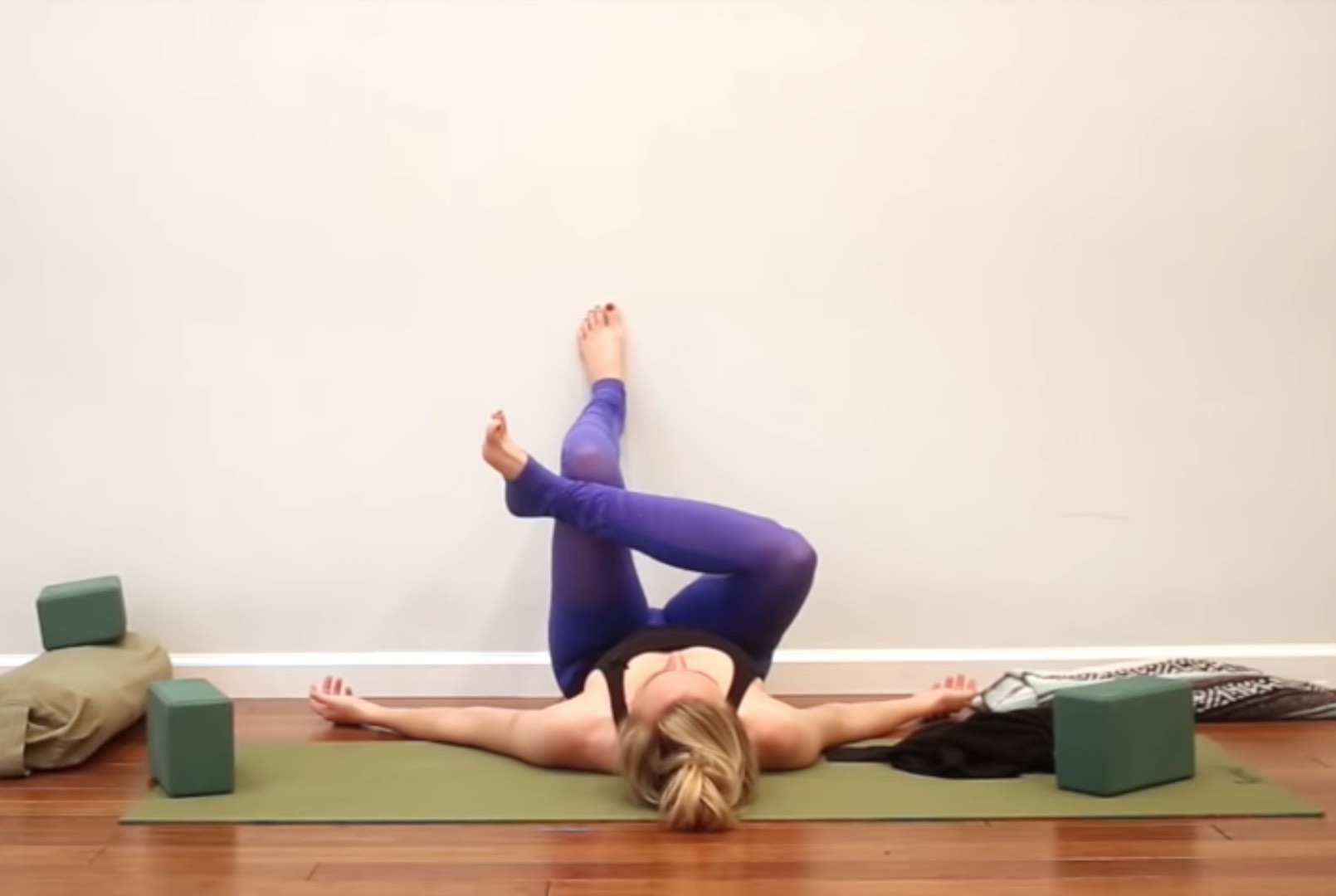
- Step 1: While lying on your back with your legs against the wall, place one foot on the wall and fold the other ankle over the first leg’s thigh area.
- Step 2: Try to pull yourself closer to the wall such that you feel a stretch going down the side of your buttocks and hips.
- Step 3: Hold for a few seconds before switching.
Variations: Chair pigeon pose forward bend head bolster variant uses props to make the pose available and easier for those who may not have the strength, endurance, or balance required to do the same pose without props.
Benefits: It gives you the advantages of freeing the hips and lower back from some strain. Hip stretches are essential to feeling comfortable and relaxed before sleep.
10. Supine Spinal Twist (Supta Jaṭhara Parivartānāsana)
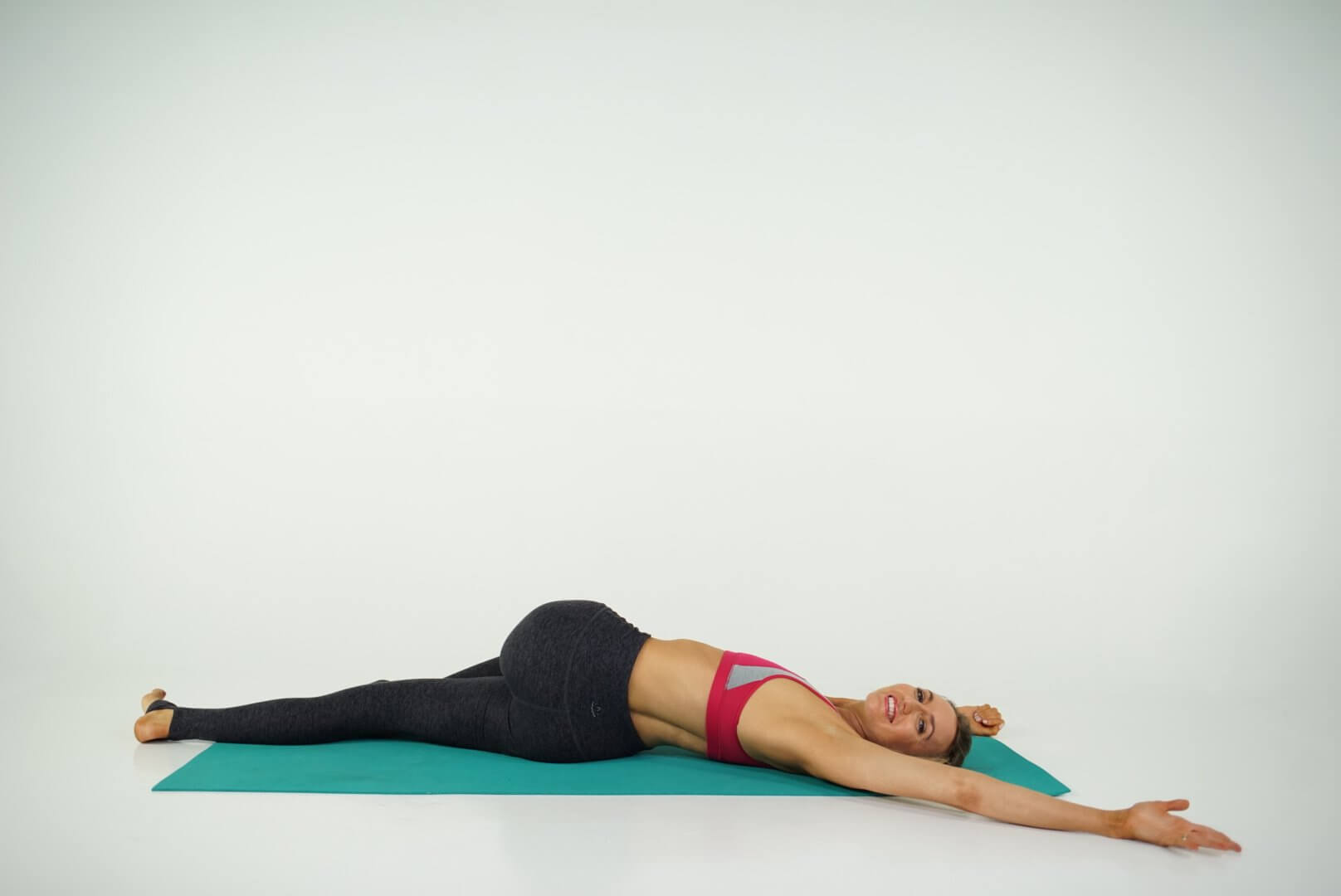
- Step 1: Lie down on your back.
- Step 2: Bend your knees and put the soles of your feet on the floor with your knees pointing up toward the ceiling.
- Step 3: When you’re ready, bring your arms out into a ‘T’ with your hands in line with your shoulders and let your knees fall over to one side.
- Step 4: Exhale and draw your right knee into your chest and extend your left leg flat on the floor. Keep your left foot actively flexed throughout the pose. Inhale.
- Step 5: Exhale and cross your right knee over your midline to the floor on the left side of your body.
- Step 6: Hold the pose for five to 10 breaths.
- Step 7: Take this pose on both sides.
Variations: Uses a bolster to make the pose accessible and easier for those who may not have the needed strength, flexibility, or balance to do the same pose without props.
Benefits: Provides deep relaxation, can be beneficial in treating back pain and sleep disturbances.
Experience 3 Training Videos from Inside My 200-Hour Online YTT

YOU MIGHT ALSO LIKE
- What is Kriya Yoga? The Philosophy and Practice
- Uddiyana Bandha: Tapping Into Your Deep Core
- 4 Reasons Hasta Bandha Is Essential To Your Yoga Practice
- Vitarka Mudra: What It Is and How Do You Use It?
- Shakti Mudra: What It Is and How Do You Do It?
- Garuda Mudra: What It Is and How Do You Use It?
- Kali Mudra: What It Is and How Do You Do It?
- Shunya Mudra: What It Is and How Do You Do It?
- Varuna Mudra: What It Is and How Do You Use It?
- Vayu Mudra: What It Is and How Do You Use It?
- Samana Vayu: The Energy of Balance & How to Access It
- Apana Vayu: The Energy of Release & Surrender
- Udana Vayu: The Ascending Wind
- Prana Vayu: The Breath of Vitality
- Vyana Vayu: The Energetic Secret to Flow
Learn how to do 11 of the most popular yoga poses correctly. Free video + PDF download.










